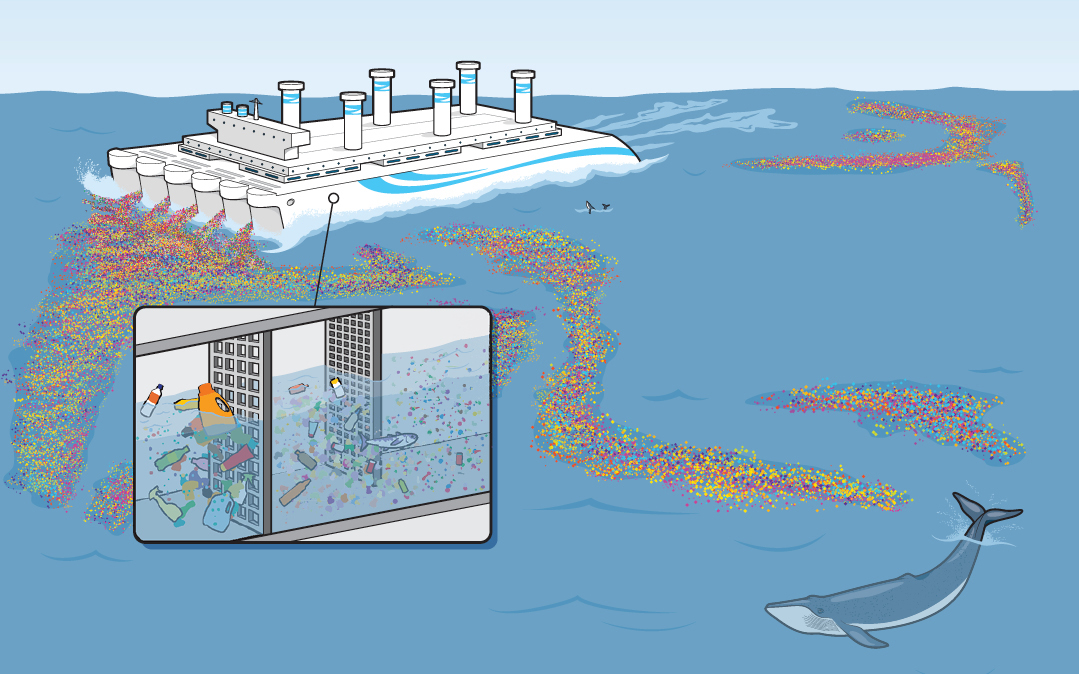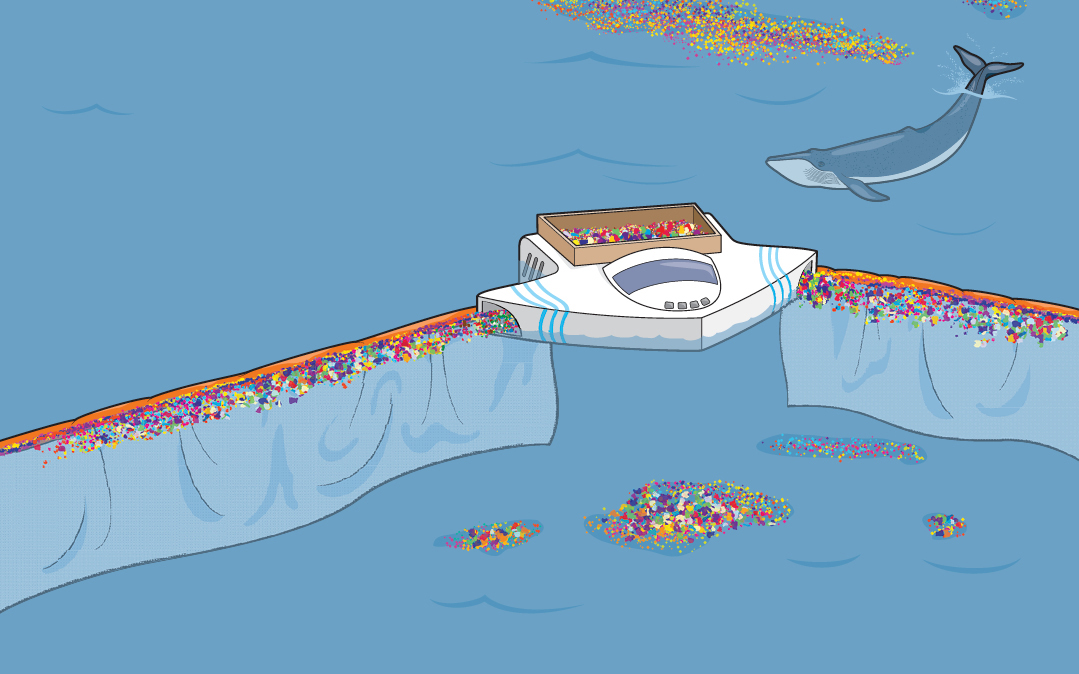The Great Pacific Garbage Patch
Two organizations have proposed innovative ways to clean up our polluted oceans
In the Pacific Ocean, vast currents known as the North Pacific Gyre flow in a circular pattern between California and Japan, turning and turning the plastic detritus of our careless civilization. Researchers estimate that the most polluted zone—the Great Pacific Garbage Patch—extends across thousands of miles. Now two organizations have proposed ambitious schemes to clean it up.

The team from SAS Ocean Phoenix, a maritime engineering company based in the South of France, wants to tackle the trash problem with a massive cleanup ship, as big as the world's largest supertanker, which would ply the polluted Pacific. The boat would suck ocean water into chambers between its parallel hulls, where a series of filters would catch first the big chunks of plastic, then successively smaller pieces. SAS Ocean Phoenix says the staggered filters would allow fish to swim between them and return to the ocean, but its design has yet to be tested.

The Ocean Cleanup would make use of the gyre's predictable currents. Two 30-mile-long floating booms would catch plastic debris in screens that descended into the water, and their V shape would naturally funnel the waste toward a central collection platform. A small prototype boom is currently being tested in the North Sea. The project team claims that fish would bounce gently off the array's screens and swim underneath them, but marine biologists aren't so sure. The barriers might also trap plankton, the tiny floating organisms that form the base of the oceanic food chain.
This article appeared in the January/February 2017 edition with the headline "Taking in the Trash."
 The Magazine of The Sierra Club
The Magazine of The Sierra Club



